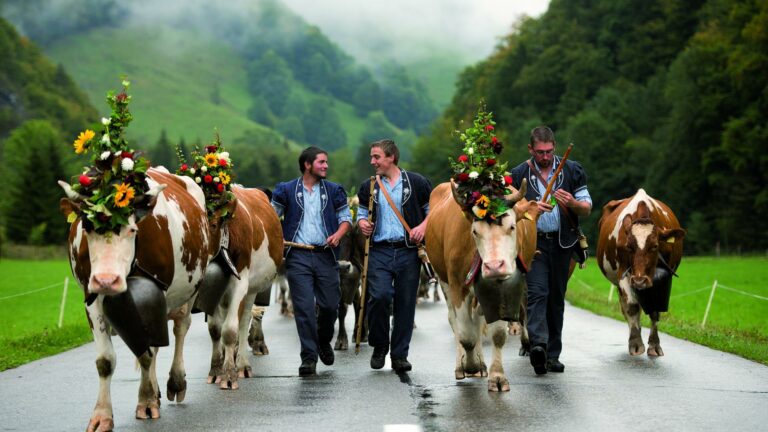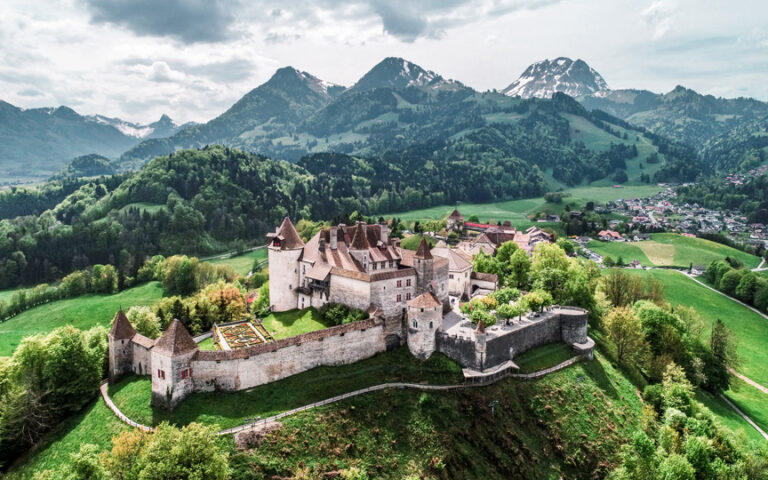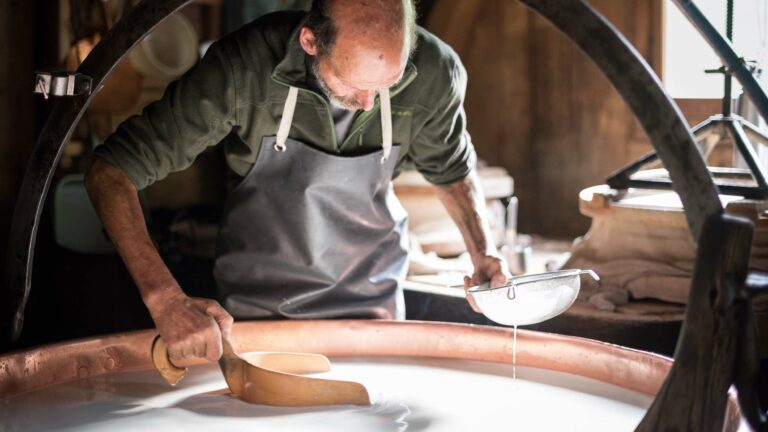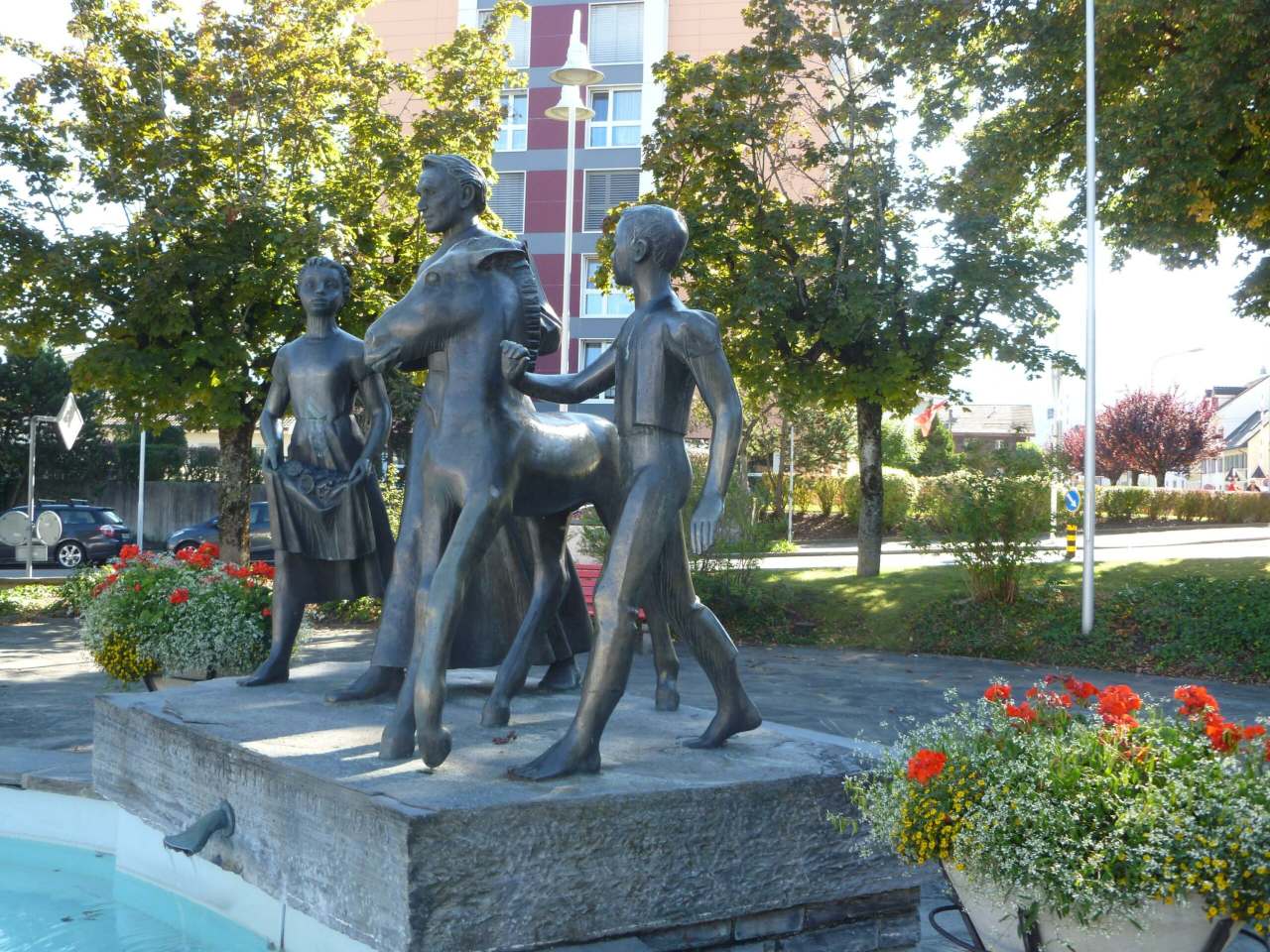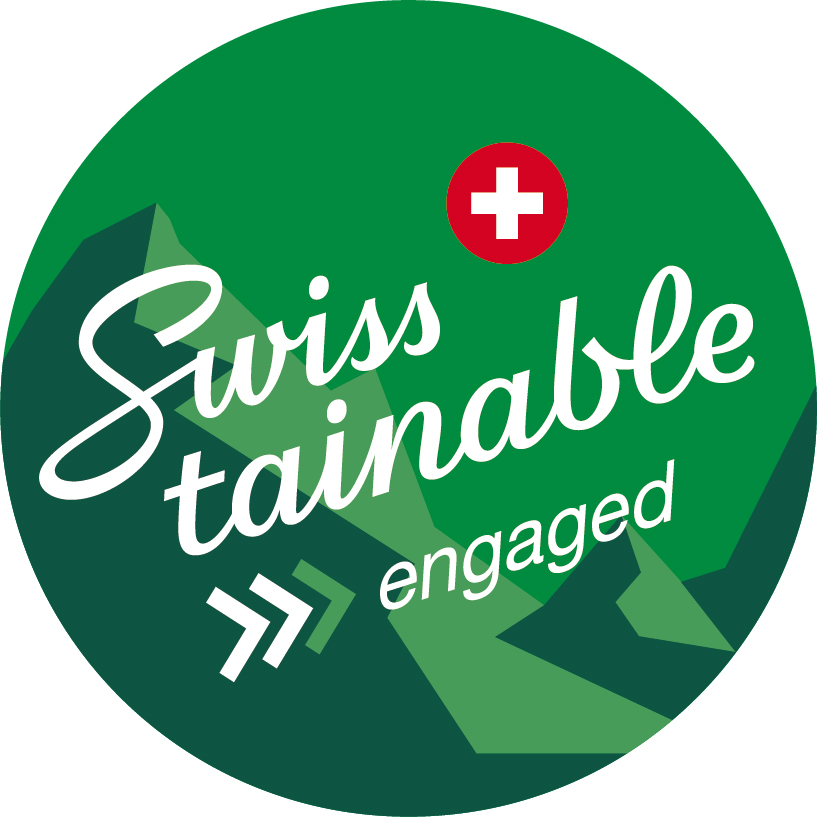Monument sculpted by Antoine Claraz in 1957. In the centre stands Joseph Bovet (1879-1951), composer of religious and secular music, particularly famous for his song “Le Vieux Chalet”.
Father Bovet
Joseph Bovet was born on 8.10.1879 in Sâles (Gruyère). The son of Pierre, a teacher and farmer, and of Marie-Joséphine Andrey, he was educated at the boarding school of Saint-Charles de Romont (FR), at Saint-Michel de Fribourg College (1896-1900), and in Einsiedeln (1900-1901); he spent a study period at the Benedictine monastery of Seckau in Austria (1903), and later at the Seminary in Fribourg. Ordained as a priest in 1905, J. Bovet served his curacy in Geneva (parish of Notre-Dame, 1905-1908). Upon his return to Fribourg he became a singing teacher at the teacher training college (from 1908) and at the Grand Seminary (from 1910), choirmaster at Saint-Nicolas Cathedral (from 1923), and canon from 1930. Director of the capital’s principle ensembles, taking charge of the entire musical life of the canton, he influenced collective tastes. A prolific composer, J. Bovet was the author of some 2000 works, half of which were secular. From the simple song to the Festspiel (an important historical or commemorative show very fashionable between 1880 and the inter-war period), he often captured the public imagination. Perceived as one of the masters of popular song, J. Bovet was able to offer his contemporaries what might be termed “musical roots” at a time when rural society was under attack by modernism. The song Le Vieux Chalet (1911), famous throughout Switzerland, is typical of this kind of work. His festivals, “Grevire” (1930) and “Mon Pays” (1934) in particular, were grandiose depictions of a country in search of a new identity. Through the Cecilian Movement (church choral societies) J. Bovet also helped to re-establish religious music. He was charismatic and immensely popular; following his death on 10.2.1951 in Clarens (comm. Montreux), Fribourg (1955) and Bulle (1957) erected statues in his honour. He is rightly considered to be the father of choral culture and a pillar of cantonal identity. An important intermediary in the “Christian Republic”, Fribourg’s conservative catholic regime between 1880 and the inter-war period, J. Bovet created structures that survived his death.
© Dictionnaire historique de la Suisse
The sculptor Antoine Claraz
Antoine Claraz was born in Fribourg on 8 September 1909. He was educated at the Cantonal Technicum, at the Kunstakademie (Munich, Germany) from 1932-1933, at the École Nationale Supérieure des Beaux-Arts, and in the workshop of L. Simon in Paris. Affiliated to the SPSAS (Society of Swiss Painters, Sculptors and Architects), the OEV (l'Œuvre) and the Institut Fribourgeois, he was a member of various committees and juries. He staged personal and collective exhibitions in a number of towns and took part in the Salons Internationaux de la Médaille in Paris, Vienna and Rome, where he won numerous prizes and competitions. Antoine Claraz abandoned painting in 1943 to devote himself solely to sculpture. He received both public and private commissions.
Endowed with great dexterity, he was a master of clay, plaster, wood, hard and soft stone, copper and alloys. A renowned artist in the techniques of “repoussé”, forged and welded metalwork, he was unafraid to work in very large formats. Antoine Claraz set the standard in terms of religious art with numerous liturgical designs. His works can be seen in Switzerland in the cantons of Fribourg, Geneva, Valais, Vaud, Neuchâtel, Basel, Schwyz, Zurich, Ticino, Zoug, Soleure and Aargau, as well as in France, Italy, Germany, England, the United States, Romania, Martinique, Ruanda and Togo. In Bulle, Antoine Claraz produced the pediment for the Town Hall and liturgical furniture for the church. He died in Fribourg on 29 May 1997.
© Encyclopédie Larousse
The cattle markets of Saint-Denis Square
The monument dedicated to Father Bovet has occupied a central position on the Place Saint-Denis since 1957. This square was formerly used as a market square. From the second half of the 19th century, with the advance of the railway – the Bulle-Romont line was built in 1868 – the cattle markets of Bulle grew significantly in stature. Figures given by the regional press indicate the scale of the event: between 24 and 26 September 1912, 1218 head of cattle were loaded at Bulle station. They occupied a total of 201 wagons. On 24 September 1912 the autumn fair was held. Thoroughbred cattle changed hands for as much as 1500 to 1600 francs (by way of comparison, during the 1914-1918 war Swiss soldiers received a wage of 80 centimes a day). The cattle market was transferred to the covered market (today the Espace Gruyère) in 1957.
© Musée gruérien
Also of interest
The sections “The Echo of Images”, “Under the Sign of the Cross” and “A Living Town” of the permanent exhibition La Gruyère, footprints and detours, at the Musée gruérien.
http://www.youtube.com/watch?v=_9Scg3kzpD8
Find out more
Patrice Borcard, Joseph Bovet, 1879-1951, Editions de la Sarine, 1993.
Antoine Claraz, Exhibition Catalogue, Museum of Art and History, Fribourg, 2000.
Archive photo:
Life-size plaster model of the Bovet monument, workshop of the Fribourg sculptor Antoine Claraz, 1957.
© Alphonse Derungs Musée gruérien
La Gruyère Tourisme
Centre commercial Velâdzo (rez inférieur)
Place de la Gare 3
1630 Bulle
+41 (0)26 919 85 00





